Ten Types of Ramen To Try On Your Next Japan Visit
When visiting a place I never try to find the ‘best of’ food.
I don’t need to find the best sushi in all of Tokyo; it’s likely that any sushi I have here will be better than any I have ever tasted. No need to battle the crowds, pay the ‘best of’ prices, or spend tons of time searching out the teeny, tiny, joint; I can just go downstairs from our apartment and walk into any place to get the best Japanese food I know.
What I do like to do is find a representative food and try it over and over and over again. Is it the same everywhere or are there regional differences in flavouring, spicing, and technique? Does it make a difference if I have it as ‘street food’ or in a restaurant? How does it differ from the version I can find at home?
In Greece we sampled calamari across the many different islands we visited. In Germany of course it was the beer and pretzels. Nepalese eat dal baat every day; it may be the same basic ingredients every day but there were small differences in flavour from region to region. Kebap in Turkey seemed to be the same everywhere, and ceviche in Peru depended on what seafood was available.
Here in Japan we knew it would be ramen; we even practiced our slurping at home to get ready! Simple ingredients (broth, noodles, pork, bean sprouts, corn, bamboo shoots, green onions and sometimes egg) are combined in a variety of ways that keep us coming back for more. We’ve found at least 10 types!
- Simple Pork Ramen. This was the very first bowl of ramen on our very first day in Japan. We stopped in a small, family run, shop while meandering through a neighbourhood in Tokyo. The pork broth was nice and light, the chashu (roasted pork) wasn’t too fatty, and the noodles were nicely cooked. We were hooked!
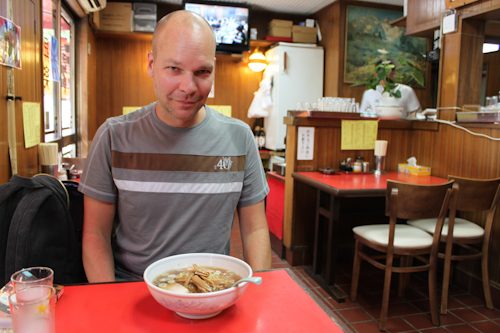
- Wonton Ramen. I didn’t know that wontons could be part of ramen but I guess seeing as the whole dish is from China originally I shouldn’t have been surprised. This was one of our favorites – the broth was light and a touch salty and the chashu was the best we’ve had; it was like the rich end of a pork roast.
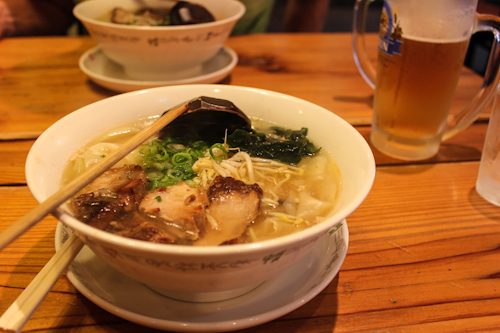
- Rich Pork Ramen. I separate this one out because it was completely different than the earlier pork versions we’d had. Mike, who pointed us to this joint, described the broth as being made from a whole pig being cooked for hours and hours. It was rich beyond belief – thick and fatty and porky. So good that I forgot to take a picture before it was gone.
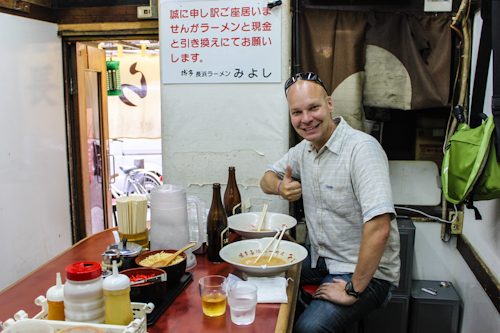
- Fast Food Ramen. This was the most disappointing of them all. There must have been 10 ramen places on this department store floor; all of the type where you choose and pay through a vending machine before heading inside. We thought that ‘King of Ramen’ must be the best so we fumbled through the vending machine process and went inside. The place was okay but the ramen sucked. The ‘broth’ was more like a gravy and was too salty for me – I don’t even remember the chashu – just that I couldn’t drink enough beer to finish the bowl. Our only ramen fail.
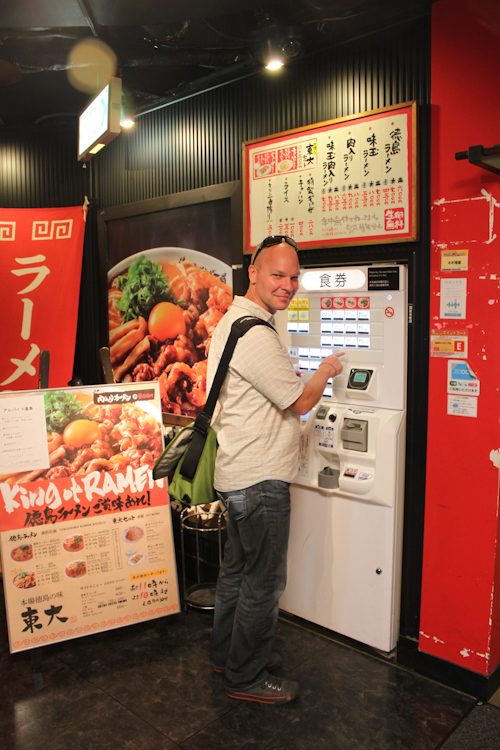
- Miso Ramen. I really like this one – it is, as the name suggests, made with a miso broth rather than pork broth. This in no way means it is vegetarian though as I’m pretty sure it’s a pork based broth with miso in it for flavouring – plus there was still some healthy chunks of chashu in there. It was slightly salty and had great unami, or mouth feel.
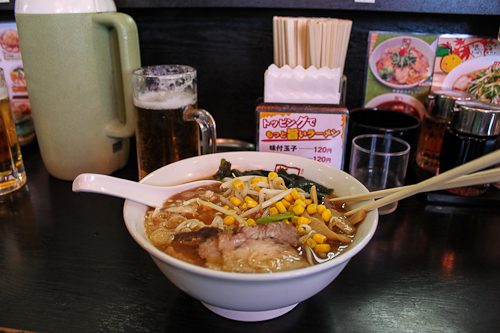
- Fish Broth Ramen. Another one I was not expecting and had never heard of. This small shop in Hiroshima served only fish based broth, either with soy added or not. Everything else about it was familiar; noodles, chashu, bamboo shoots, nori. The plain fish broth one was a little too ‘fishy’ but when combined with light soy sauce it was an interesting twist.
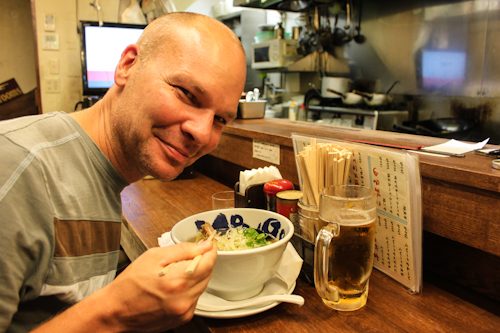
- White Leek Ramen. A pared down, lighter, version with shaved white leek on top. The leeks add a great onion flavour to the broth and help to cut the richness of the chashu. One of my favorites.

- Garlic Ramen. At this small shop in Takayama there was a bowl of peeled garlic on the table along with a grater; a do-it-yourself seasoning kit.
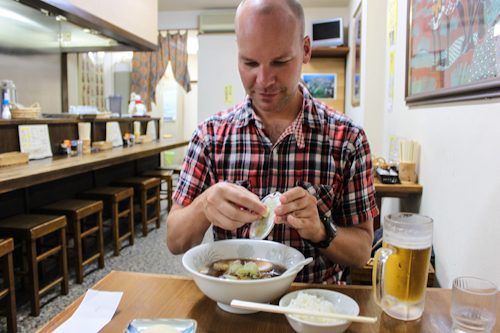
- Ham and Egg Ramen? Perhaps our lack of language means that we actually ordered this version, or maybe this is just how this railway station makes their ramen, but ham (although a laudable pork product) is no substitute for chashu in ramen. It was not a memorable version other than for this oversight.

- Shio Ramen. I wasn’t sure we were going to see this version and then today, on almost our last day, it appeared on the English menu we were given. Shio means salt; it was a very lightly salted broth with a pork back flavor – the shio broth completely enhanced the flavours of everything else in the soup and ended up being Jason’s favorite ramen.
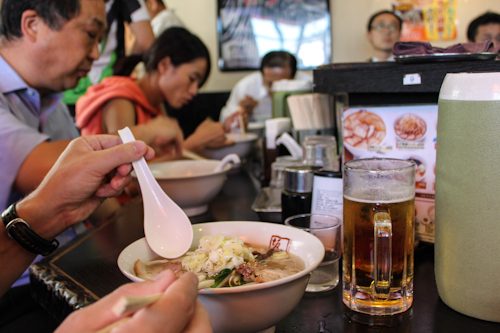
Who knew there could be so many different varieties of a basic noodle soup? I think this is one dish that I would never get tired of.
What about you? Do you try the same food over and over again to see how it changes?



